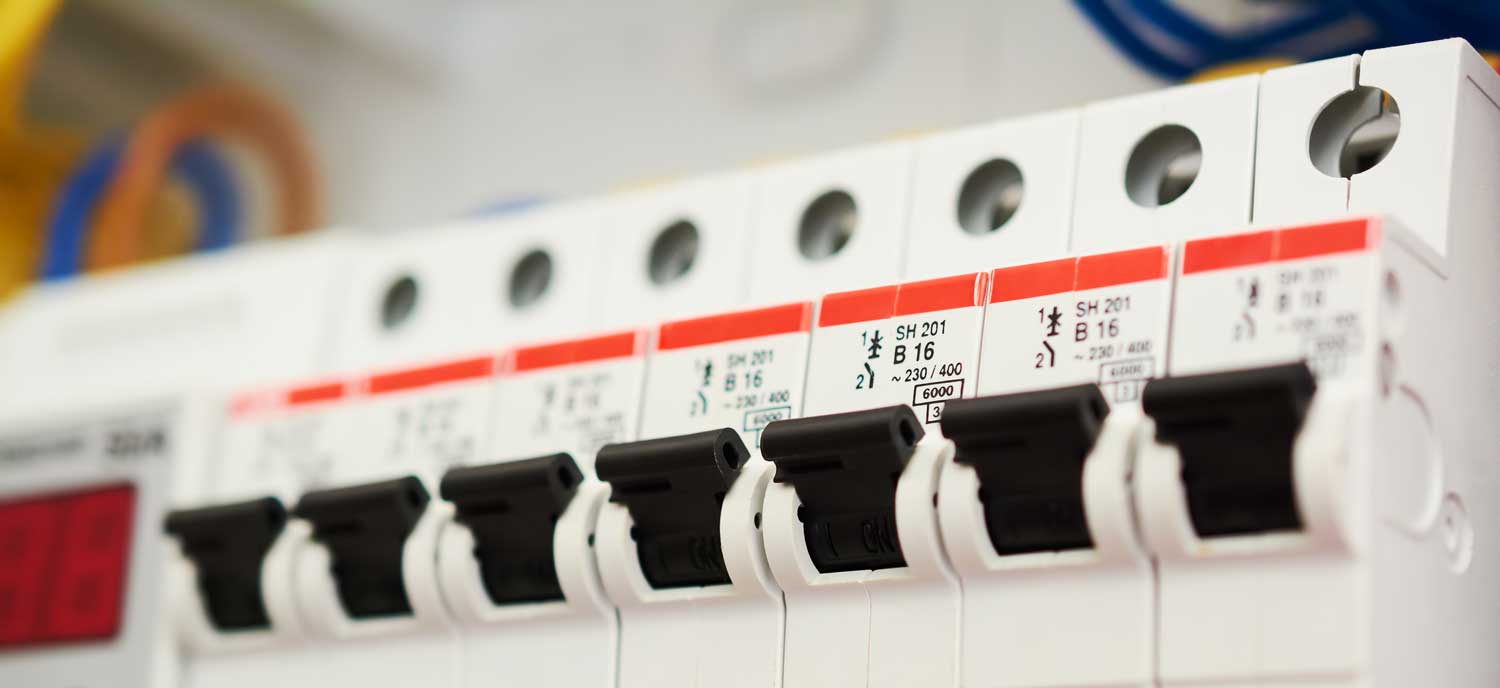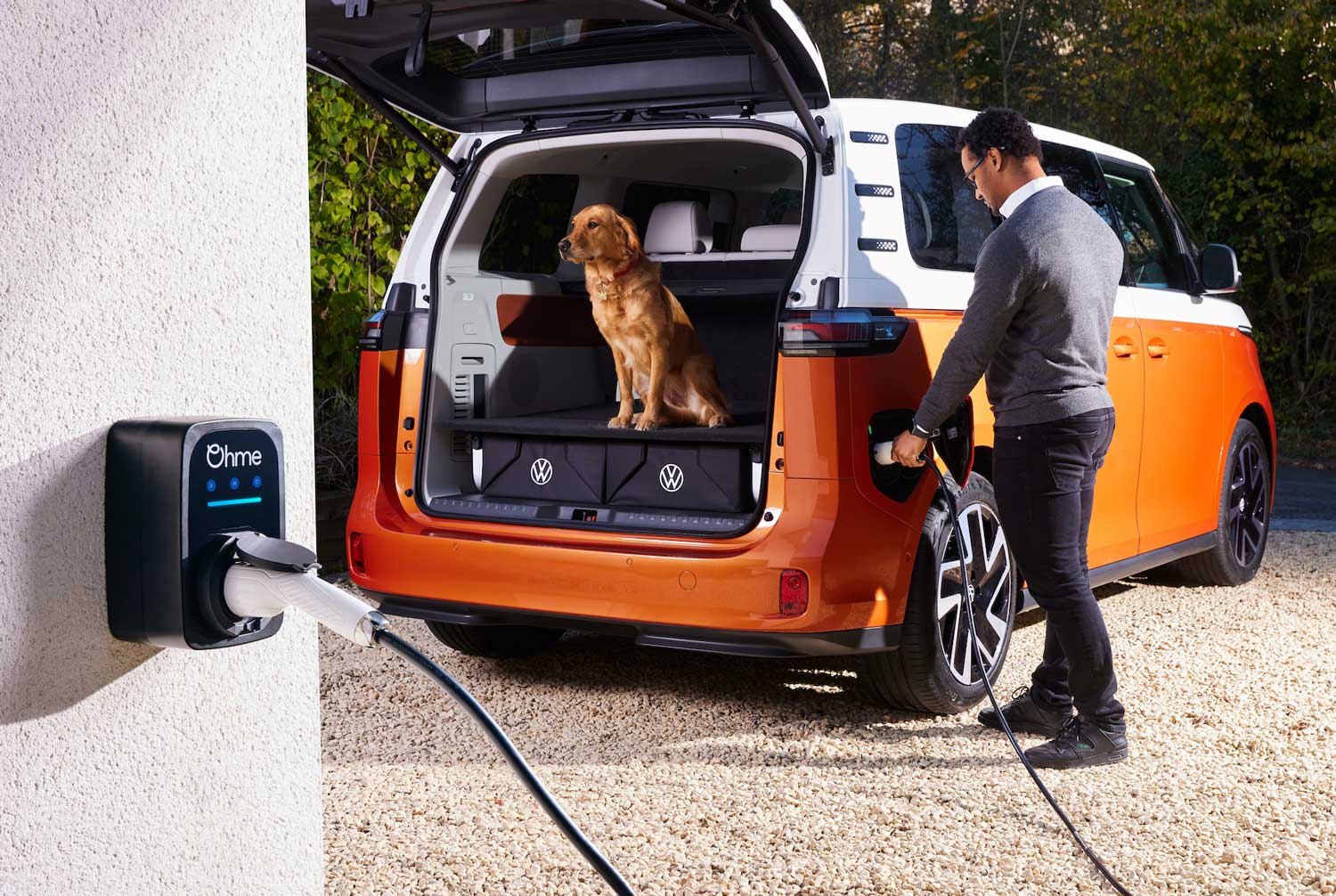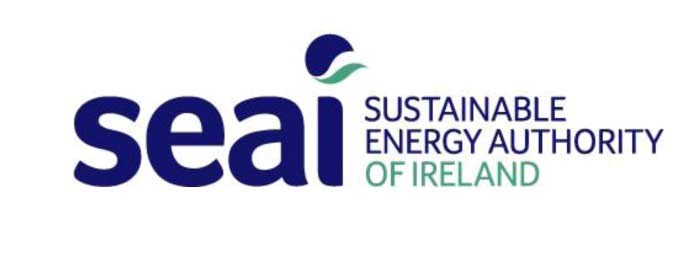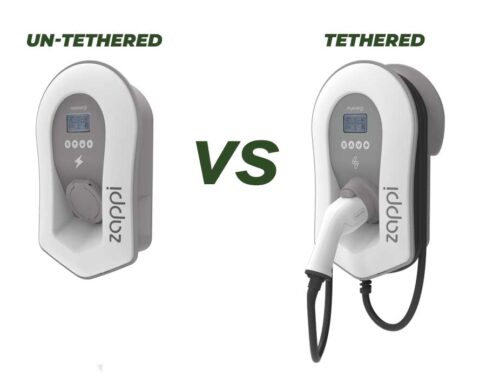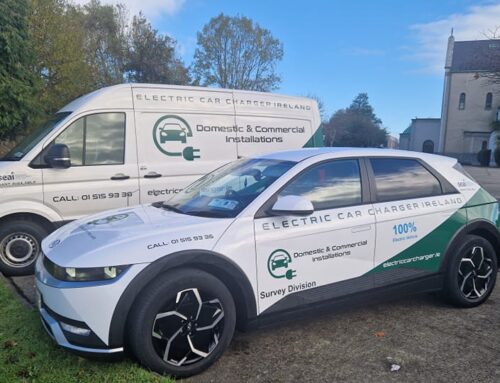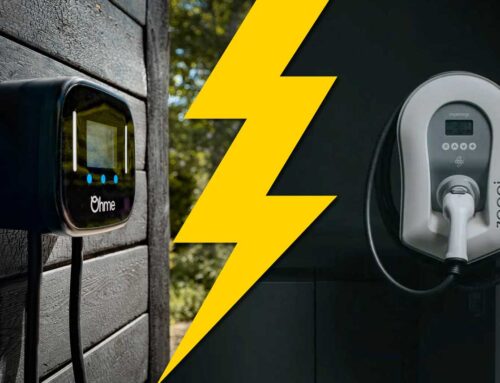As more Irish drivers make the switch to electric vehicles, one question keeps coming up: how can we future-proof our home charging solutions?
“Is my home ready for an EV charger — and what can I do to future-proof it?”
Whether you’re building a new home or upgrading an existing one, planning ahead for EV charging can save you thousands later. From fuse-board upgrades to smart load management and cable pre-wiring, here’s how to make sure your electrical system is ready for the future.
Contents
- Why Future-Proofing Matters
- Check Your Home’s Power Capacity
- Smart Load Balancing: Protecting Your Fuse Board
- Plan Cable Runs Early — Especially for New Builds
- When to Upgrade Your Fuse Board
- Choosing a Future-Proof EV Charger
- SEAI Grants & Incentives
- Final Tips for Future-Proofing
- Build Today, Save Tomorrow
- EV Charger Future-Proofing: FAQs
Why Future-Proofing Matters
Installing an EV charger isn’t as simple as plugging into a socket — it draws a significant amount of power. Many Irish homes were built long before electric cars were considered, meaning the main fuse, consumer unit, and cabling may not be designed to handle the additional load.
Future-proofing provides protection against:
- Your home will be able to support both current EV charging systems and upcoming models with increased capacity.
- You prevent yourself from needing to pay for costly rewiring or fuse-board replacement work in the future.
- Your property stays ready for EV charging, which becomes an attractive feature for potential homebuyers.
Include EV charger preparation in your current electrical work plans — it’s typically more cost-effective than retrofitting after the build.
Check Your Home’s Power Capacity
Before installing an EV charger, your installer will check the main fuse rating — typically 63 A or 80 A in Irish homes.
A standard 7.4 kW charger draws around 32 A on its own, meaning your charger could use half your available capacity. The installation of showers, ovens, and heat pumps shows why power balancing has become necessary.
Quick checklist for homeowners:
- The main fuse rating should be 80 A or higher.
- The consumer unit has protected ways which are available for use.
- The system features RCD protection together with an isolator switch that follows modern standards.
- The I.S. 10101 wiring regulations require the charger to operate through its own dedicated electrical circuit.
If you’re unsure, an electrician can perform a load assessment to calculate how much capacity your household uses during peak times.
Smart Load Balancing: Protecting Your Fuse Board
The core component of secure home-based electric vehicle charging systems depends on smart load balancing technology.
The charger functions as a smart device which prevents the main fuse from tripping by adjusting the charging speed based on the total electrical load of your home.
For example:
- If your heat pump and oven are running, your charger might reduce from 7.4 kW to 3.6 kW.
- The system operates at full speed until the load decreases (such as during nighttime hours), making it ideal for smart charging configurations.
The system includes an advanced feature which enables it to differentiate between system overload and normal smart home operation.
The following load balancing options exist in Ireland:
- EO Mini Pro 3 is a compact solution that supports smart charging for home EV setups. — load-management compatible with dynamic monitoring.
- Zappi v2 — integrates load management and solar diversion.
- Wallbox Pulsar Max is an excellent choice for those looking to integrate smart EV charging into their home setup. — supports automatic load balancing via power sensors.
The best way to future-proof your setup is to verify that your fuse board and wiring system can handle load balancing technology, even if you do not plan to install a charger at this time.
Plan Cable Runs Early — Especially for New Builds
Start building or renovating by creating a solid foundation that will support your construction project.
The process of installing EV charging cables through walls and driveways, and under finished floors, becomes both expensive and inconvenient when done at a later time. The installation of a conduit or duct between your fuse board and charger location during construction will cost minimal money and can reduce future installation expenses by enabling smart charging capabilities. 70–80 %.
Recommended specs for new builds:
- Install a 6 mm² or 10 mm² cable (depending on distance) from the fuse board to the exterior wall or driveway.
- Include a 32 A isolator switch near the consumer unit.
- A weatherproof external box or capped conduit needs to be installed for any future connection requirements.
Even if you don’t connect a charger right away, the infrastructure will be ready — and SEAI grants still apply when a Safe Electric-registered installer later completes the system.
When to Upgrade Your Fuse Board
A modern consumer unit provides:
- RCD/RCBO protection on each circuit.
- Space for a dedicated 40 A breaker for your charger.
- Compatibility with load-management sensors or CT clamps.
A three-phase power supply upgrade becomes necessary for houses that operate multiple electric vehicles and electric heating systems, but most Irish residents can operate with single-phase power and smart load balancing systems.
The cost of a full board replacement can be a significant financial investment, although it provides long-term safety benefits and flexibility advantages, especially when considering future-proof solutions like smart EV chargers.
Choosing a Future-Proof EV Charger
Not all chargers are created equal, especially when it comes to smart EV functionality and future-proofing capabilities. To ensure your setup stays relevant for years, look for models that support smart charging and solar panel integration.
| Feature | Why It Matters |
|---|---|
| OCPP Compatibility | Allows remote updates and integration with future energy apps. |
| Dynamic Load Balancing | Protects your home’s supply automatically. |
| Solar Integration | Enables free charging from PV panels. |
| Wi-Fi / App Control | Lets you schedule and monitor charging remotely. |
| Tethered or Untethered Options | Choose what suits your parking setup. |
At Electric Car Charger Ireland offers a variety of options that cater to smart EV and home charging requirements., We recommend chargers from trusted brands like EO, Zappi, and Wallbox, each offering smart load management and SEAI-grant compatibility.
SEAI Grants & Incentives
The SEAI Home Charger Grant gives you up to €300 for your installation costs, even if your charger serves as part of a future-proofing system.
You should maintain your cabling work receipts because SEAI accepts staged applications when a Safe Electric installer confirms the complete installation, although you intend to add the charger at a later time.
There’s also no Benefit-in-Kind (BIK) for employees charging company EVs at home, making it even more worthwhile to prepare your property for multiple EVs.
Final Tips for Future-Proofing
- Plan for two vehicles, even if you currently own one.
- Install ducts before driveways or paving are completed.
- Choose smart chargers with over-the-air software updates.
- Use Safe Electric-registered installers for compliance and SEAI approval to ensure your home charging setup is up to standard.
Build Today, Save Tomorrow
The process of preparing your electrical system for EV charging serves multiple purposes because it enhances safety standards while improving operational efficiency and increasing your property value when you decide to sell.
Future-proofing your electrical system at this moment will prepare your home to support upcoming electric mobility technologies, whether you need to replace a fuse board or install new cables or establish a smart load-balancing system.
Electric Car Charger Ireland provides free site assessments and personalised guidance to customers, as they are Ireland’s top experts in residential and solar, as well as intelligent EV charging solutions.
EV Charger Future-Proofing: FAQs
What main fuse rating do I need for a home EV charger?
Most Irish homes have a 63 A or 80 A main fuse. An 80 A supply offers more headroom for a 7.4 kW (≈32 A) charger alongside other household loads. A load assessment by a qualified electrician will confirm suitability.
Do I need to upgrade my fuse board before installing a charger?
If your consumer unit is old, lacks RCD/RCBO protection, or has no spare ways, an upgrade is recommended. A modern board improves safety and supports a dedicated circuit and load-management sensors.
Can I pre-wire now and still claim the SEAI grant later?
Yes, investing in a smart EV charger can significantly enhance your home charging experience. Keep receipts for cabling and infrastructure work. The final installation must be certified by a Safe Electric-registered installer to complete a staged SEAI application.
What cable size should I run for a future charger?
Commonly 6 mm² or 10 mm², depending on distance and installation specifics. Your installer will size the cable to local regs and voltage-drop limits.
How does smart load balancing work?
The charger monitors your home’s total demand and automatically reduces charging current to keep within supply limits, then restores full speed when demand drops.
Do I need three-phase power at home?
Usually not. Single-phase with smart load balancing is sufficient for most homes. Three-phase may be considered where there are multiple EVs or significant electric heating loads.
Related search terms: ohme home pro, home ev charging, electric car charging, ev home, charge your electric vehicle, charging unit, electric car charging products, charging points, solar energy, ohme, compatible charger, electric vehicle at home, ev car, ev charging stations, ev home chargers, ireland’s best, smart features, charger models, charging times, charge your ev, renewable energy, solar power, energy source, 7kw home, power output, overnight charging, charger offers, solar ev, v2g, charge your car, seamless, green energy, charging requirements, solar compatible, seai grant approved, electricity bill, solar pv, off-peak, charging based, v2h, adapt, wi-fi connectivity, smartphone app, packed with smart, start and stop, electricity grid, vehicle-to-home, vehicle-to-grid, full battery, specific times, ac and dc, european standards, emc, rohs, ce certified, electricity prices
Ever wondered about solar EV charging Ireland – check out our latest blog post for details

